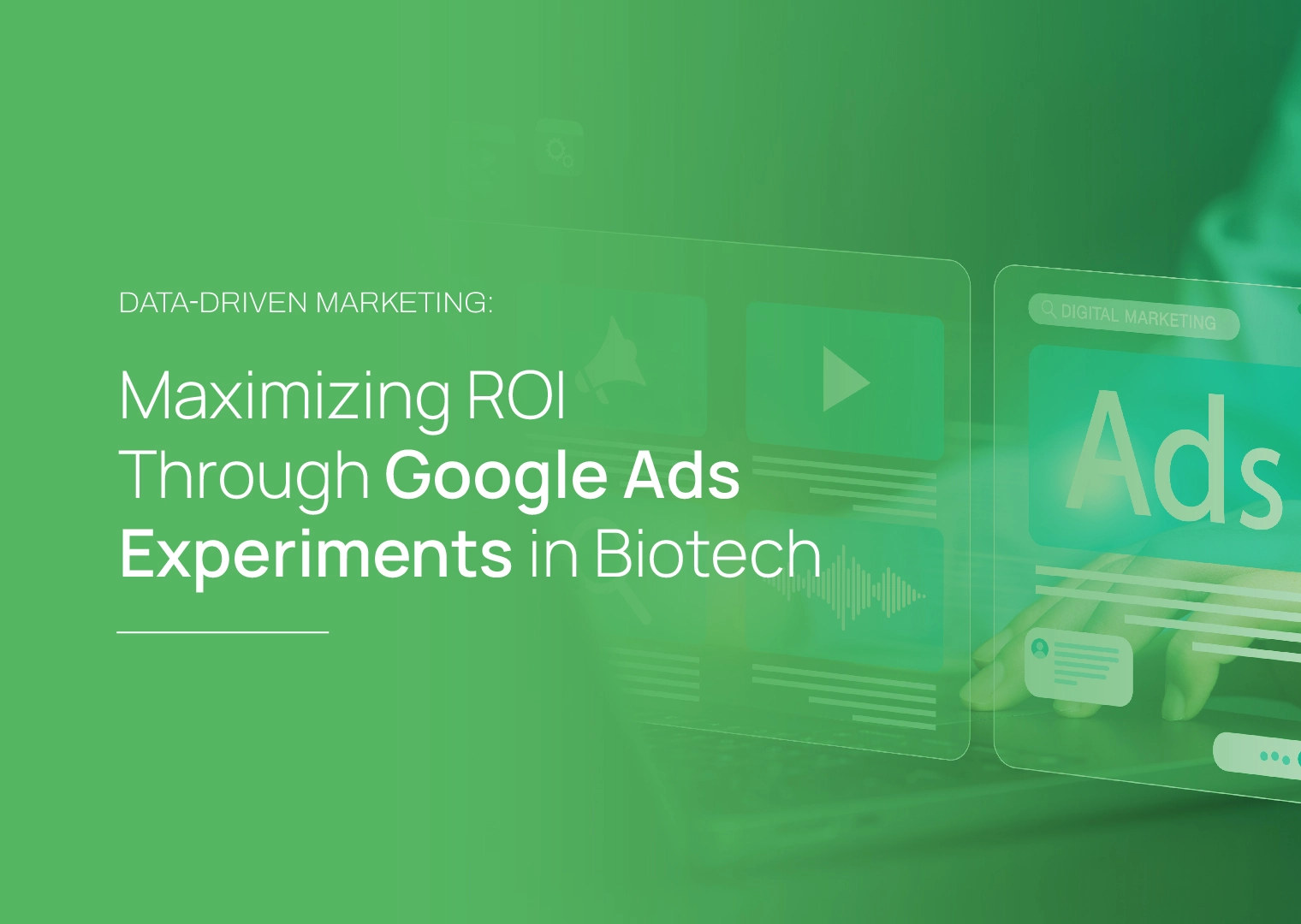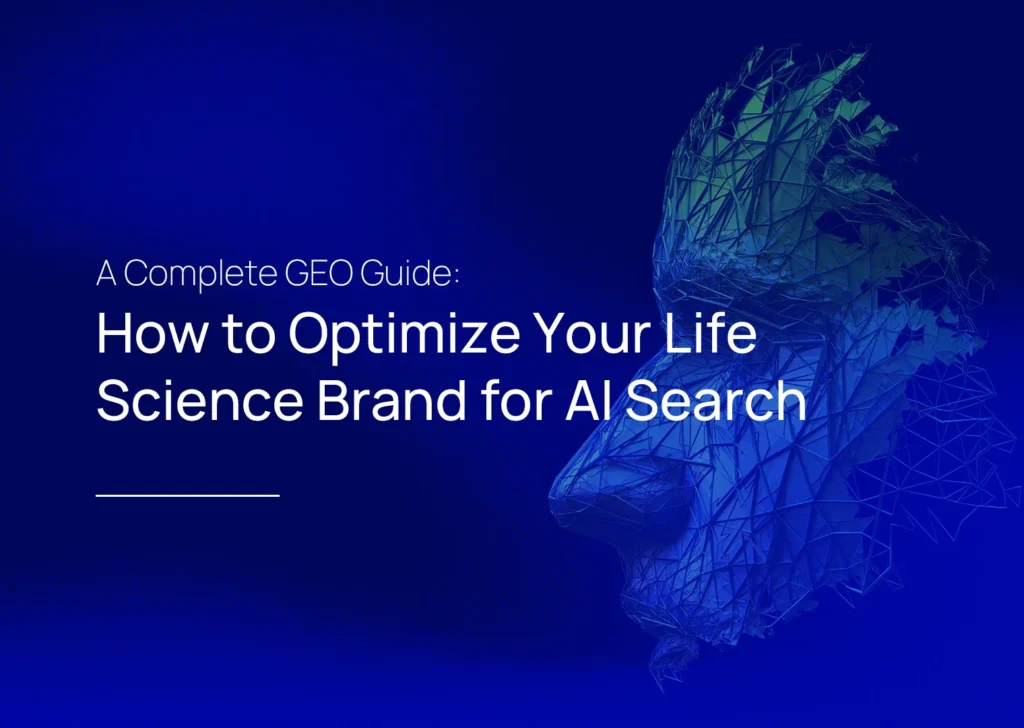Key Takeaways:
- Google Ads experiments provide measurable data to optimize marketing strategies
- Scientific methodology in marketing leads to better ROI
- A/B testing in digital marketing mirrors scientific research principles
- Data-driven decisions reduce advertising waste and improve targeting
The Scientific Method Meets Digital Marketing
As scientists, we’re trained to test hypotheses, gather data, and draw conclusions based on evidence. This same methodical approach can revolutionize your biotech marketing strategy through Google Ads experiments. Let’s explore how applying scientific rigor to digital marketing can maximize your advertising ROI.
Understanding Google Ads Experiments
Google Ads experiments are a powerful testing framework that allows advertisers to make data-driven decisions about their campaigns. They function like scientific experiments, where you can create a “control” group using your existing campaign settings and a “test” group with modified variables. Google Ads experiments allow you to:
- Test different ad copy variations
- Compare bidding strategies
- Evaluate audience targeting methods
- Assess landing page effectiveness
By running these experiments, advertisers can gather statistically significant data about which campaign elements perform better rather than relying on gut feelings or assumptions. Going through the scientific process from hypothesis to results empowers actionable conclusions that drive optimizations and long-term results.
The Power of A/B Testing in Biotech Marketing
Just as you wouldn’t draw conclusions from a single experiment, successful digital marketing requires systematic testing. A/B testing enables companies to optimize their messaging and campaigns with scientific precision by uncovering what truly resonates with their sophisticated audience of researchers, clinicians, and industry professionals. Examples of A/B tests that we recommend include:
- Highlighting different value propositions
- Using technical versus benefit-focused messaging
- Varying imagery to identify what catches the users’ eye
- Evaluating the power of unique calls-to-action
The insights gained from A/B testing can significantly improve conversion rates, reduce customer acquisition costs, and help biotech companies better align their marketing efforts with their audience’s preferences and decision-making processes. 
Data Collection and Analysis to Maximize ROI
Like any good scientific experiment, Google Ads testing provides quantifiable metrics, such as:
- Click-through rates (CTR)
- Conversion rates
- Cost per acquisition (CPA)
- Return on ad spend (ROAS)
These metrics help determine which approaches resonate best with your target audience, whether they’re laboratory directors, research scientists, or biotech executives. By keeping an eye on key metrics, you can act quickly to optimize your ads and take advantage of strategies that work to make sure that your budget is allocated most efficiently. Applying scientific methodology to your digital advertising strategy allows you to reduce ad spend, improve targeting accuracy, improve conversion rates, end enhance overall marketing effectiveness.
Optimizing for B2B Biotech Audiences
B2B marketing in biotech requires a specialized approach. In the biotech sector, purchasing decisions are typically complex, sales cycles are longer, and the audience expects a high degree of precision and scientific validity in all communications. Google Ads experiments can help you:
- Target decision-makers with precision
- Test technical content against high-level messaging
- Optimize for longer sales cycles
- Evaluate different audience segments
Analyzing the data from advertising experiments helps biotech companies maintain their competitive edge by identifying emerging trends and unmet needs in their market. By looking into search patterns, research interests, and engagement metrics, marketing teams can quickly adapt their content strategy to address new scientific developments or changing customer requirements. This agility is essential in an industry where scientific advancement and market demands evolve rapidly.
Practical Applications in Biotech Marketing
There are many different ways that Google Ads experiments can be leveraged for marketing in the biotech space. Examples of insightful experiments include:
- Testing technical specifications vs. benefit-focused messaging
- Comparing different product application emphasis
- Evaluating geographic targeting strategies
- Assessing various audience segment
Best Practices for Google Ads Experiments
Before you launch your Google Ads experiments, be sure to have best practices in mind to allow for the best data to drive results. Just like when you’re working with precious samples in the lab, you want to make sure that your advertising strategy doesn’t lead to wasted resources. To get started on the right track, we recommend that you:
- Set clear objectives
- Use statistically significant sample sizes
- Control for variables
- Document all parameters
- Allow sufficient run time
- Apply learnings systematically
Ready to apply scientific rigor to your digital marketing strategy? Contact Samba Scientific’s team of biotech marketing experts to develop a data-driven Google Ads strategy that delivers measurable results. Let’s connect.




